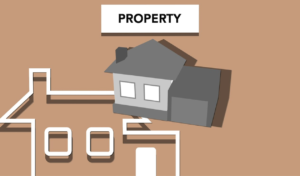Your home is probably your most expensive asset, so you’d want enough insurance to conduct any repairs and replacements after an unexpected incident. However, choosing the right homeowner’s insurance policy is easier said than done. Being underinsured or signing with a company that doesn’t entertain claims are some mistakes to avoid when shopping for the right policy.
It is important to do your due diligence when finding an insurer. You must work with someone reliable and experienced. They should provide adequate coverage, and their premiums should be within your budget. Here’s a comprehensive step-by-step guide to help you choose the right homeowner’s insurance policy.
Step 1 – Determining What You Need Coverage For
The first thing you need to do is determine the replacement cost of your home and the total value of your belongings and assets. When choosing the value, you should consider additional structures in your home, such as garages and sheds. Also, consider getting flood or earthquake insurance if your home is in a high-risk area.

Step 2 – Calculating the Coverage
The next step is to calculate the replacement cost. This cost is determined by several factors, but the two most important ones are the construction cost of the house and the size of your dwelling. Other factors, such as your home’s interior and exterior condition, the materials used in construction, and additional features, such as a garage or pool, will also factor into your coverage calculation.
You can get an estimate from your chosen insurer or use an external replacement cost calculator. Another option is to hire an in-person appraiser who can come in and provide a close-to-accurate valuation of the coverage you need.
Step 3 – Collect Information
The next step is to gather all your personal information. Having this data ready can speed up the buying process and ensure seamless claim filing, should you ever require one. The personal information will include your name, DOB, marital status, and contact information. Make sure to provide the correct contact information so the insurer can contact you for any urgent requirements.
You should also have basic information about your home handy. This will include your address, the time spent at the property, the type of residential structure, and whether it is your primary residence. Also, collect information on the year it was built, square footage, number of rooms, and any mortgage or other covenants on the property. Other information includes the type of material used in the construction of the building, exterior walls, roof material, any HVAC systems, and the kind of foundation.

Step 4 – Compare Quotes
You should never settle for the first quote you get from any insurer. Instead, ask for quotes from at least three companies before choosing your preferred one. To compare quotes, you need to understand the contents of the policy. A basic homeowner’s insurance policy will include coverage for the dwelling, personal belonging, living expense coverage, etc.
You can always get additional coverage, such as floods and earthquakes, if you’re located in a designated flood area. Ensure the additional coverage is covered in the quote you receive from the insurance company. You should also examine your deductibles before making your decision. The last thing you’d want is to be underinsured in an unfortunate incident at your home.
Step 5 – Purchase the Policy
Once you’ve compared quotes, you should research the trustworthiness and reliability of every insurer. Due diligence is very important when purchasing a homeowner’s insurance policy because you would want to work with an insurer who will support you in times of distress by promptly processing your claim and providing a fair and equitable settlement.

Once you’ve selected the right policy, ensure all your information is correct before signing on the dotted line. The insurance company may conduct a home inspection to ensure the information provided is correct.
One mistake you should always avoid is going for the cheapest possible policy. It might not be enough to cover your losses, and depending on the situation, you may need to pay a lot of money from your pocket.
If the worst happens and you need to file an insurance claim, have a reliable public adjuster who can assist you in documenting your damage and filing a subsequent claim with the insurer.
Get Started with Morgan Elite Specialist Services
If you’re looking for reliable, transparent, and experienced public adjusters, check out Morgan Elite Specialist Services. With over 75 years of combined experience in public adjusting and handling complex claims, we are well-positioned to help you with all your insurance needs.
As experienced public adjusters in Texas, we will help resolve your insurance claim issues and help you understand the intricacies of your homeowner’s insurance policy. We can help you with different aspects, including collecting and filing documentation, recording damage evidence, and negotiating with the insurer for a fair settlement.
Report a claim now or contact us today for more details on Mass Tort Settlement, forensic accounting services, claims handling services or contact them today.









